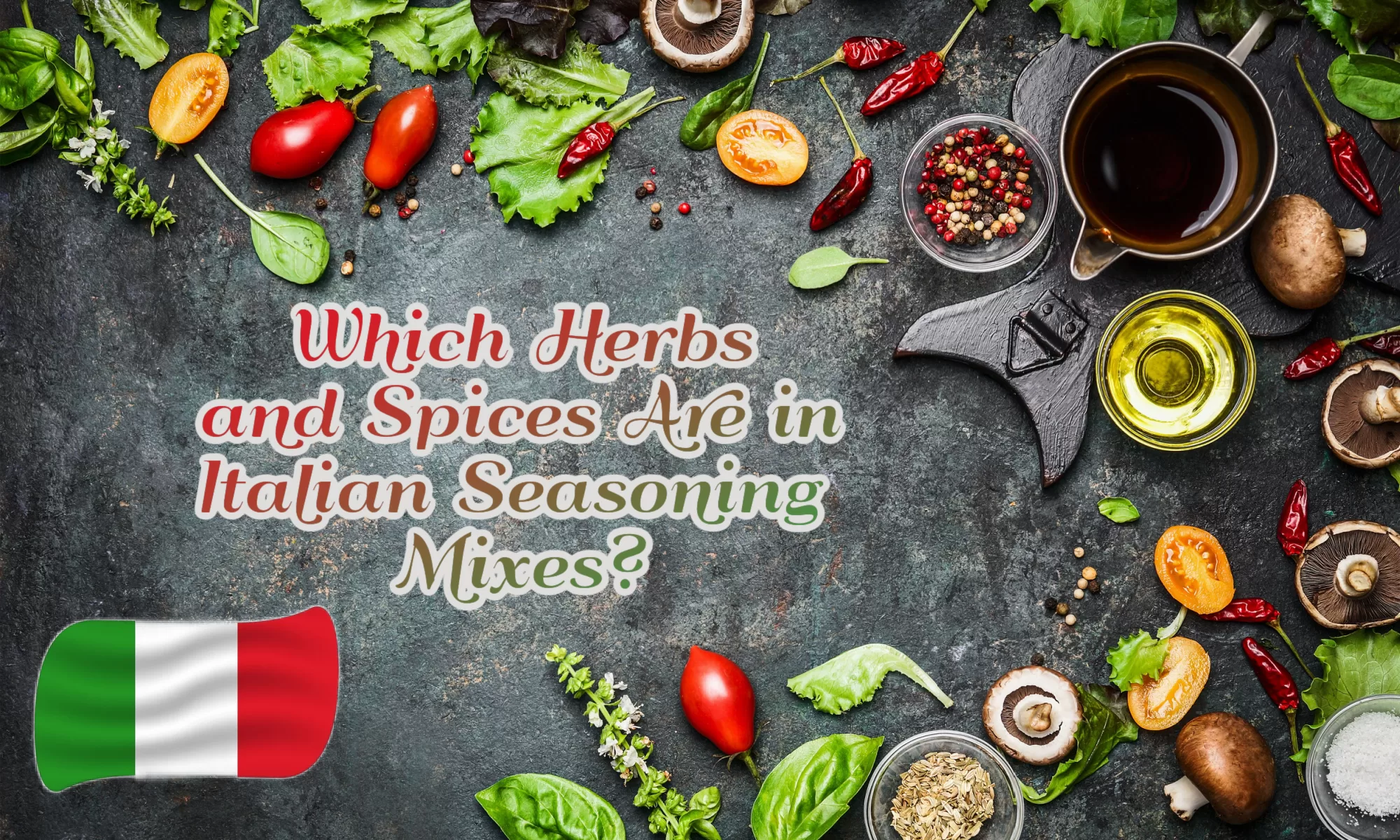Seasoning blends offer a convenient blend of specific herbs and spices that complement certain foods and cooking styles. Some examples of popular seasoning mixes include taco seasoning, poultry seasoning, and Italian seasoning.
The herbs most commonly found in Italian seasoning mixes are basil, oregano, rosemary, marjoram, thyme, sage, and savory. Some spices that might also be included include red pepper flakes, coriander seed, and garlic powder.
We’ll review each of these key ingredients of Italian seasoning in detail next!

What is Italian seasoning?
Italian seasoning is a seasoning mix consisting primarily of herbs, but it can contain spices as well. Italian seasoning is used in Italian dishes like lasagna and other pasta dishes, stuffed peppers, breads, and much more.
This seasoning blend is quite versatile, so you’ll find it in recipes that aren’t necessarily Italian dishes, too. Which herbs and spices are in Italian seasoning? We’ll cover that next!
Which herbs and spices are in Italian seasoning mixes?
You can easily find Italian seasoning in the herb and spice aisle since it’s one of the most popular seasoning blends out there. If you don’t have Italian seasoning at home but you have the herbs and spices that comprise it, you can make your own seasoning blend and skip a trip to the store!
The herbs and spices in store-bought Italian seasoning will vary a bit among brands, but they’ll usually contain the following herbs and spices.
Basil
Basil pairs well with tomato-based sauces, which is one reason it’s included in recipes for pasta and pizza sauces. Basil can be used in both sweet and savory dishes and has subtle flavors of mint and pepper.
Basil is one of the herbs you can easily find fresh at the grocery store, but it’s of course the dried version that is included in dried Italian seasoning mixes.
Oregano
Not only is oregano a popular herb used in Italian seasoning and dishes, but it also makes an appearance in Mexican cuisine as well. Its slightly bitter and spicy flavor pairs especially well with tomatoes, making it a staple in Italian and Mediterranean dishes alike.
If you don’t have Italian seasoning on hand, oregano is one of the most important herbs to make sure you use along with basil!
Rosemary
Rosemary’s unique needle-like leaves make it easy to distinguish from other herbs. One of the most popular herbs, rosemary has a “woodsy” flavor with notes of evergreen, citrus, and mint.
If you don’t have rosemary on hand, thyme and sage are a good substitute. (It reminds us of Simon and Garfunkel’s album titled “Parsley, Sage, Rosemary and Thyme”!)
Marjoram
Marjoram is a member of the mint family and tastes similar to thyme (the next herb on the list) but is a bit sweeter. Marjoram’s milder flavor makes it a versatile herb as a garnish for meat dishes, salads, and other foods besides Italian dishes.
Thyme
Thyme is another versatile herb with a sweet but savory flavor that pairs well with rosemary and oregano in Italian seasoning. Thyme is described as having a peppery and sweet flavor with a clove-like mouth sensation (a bit numbing and warm).
Sage
Another member of the mint family along with marjoram, sage offers hints of pepper, lemon, and mint. Here’s a fun cooking fact: adding sage early in the cooking process will mellow its flavor while adding it towards the end of cooking boosts its flavor!
Sage is also an ingredient in other popular seasoning blends like poultry seasoning and pairs well with all types of meat and sausage.
Savory
Savory might sound like a seasoning blend, but it’s an herb of its own. There are two types of savory: summer savory (Satureja hortensis) and winter savory (Satureja montana).
Both members of the mint family, summer savory has a hotter, peppery flavor and winter savory is milder in comparison and described as being “earthy”.
Other herbs that might be in Italian seasoning
Besides the main herbs we’ve already covered, some versions of Italian seasoning contain parsley, which looks similar to oregano but has a different flavor.
Are there any spices in Italian seasoning?
You might have noticed that the main ingredients in Italian seasoning are herbs, not spices! That doesn’t mean that spices can’t be included – some versions of Italian seasoning add red pepper flakes (spicy), coriander seeds, and garlic powder.
FAQs:
If you don’t have Italian seasoning on hand, you can get away with using just oregano and basil, two of the main herbs in Italian seasoning. Thyme is also an important herb in Italian seasoning, so if you have that on hand make sure to add it!
McCormick’s version of Italian seasoning contains marjoram, basil, rosemary, thyme, oregano, savory, and sage.





Leave a Comment